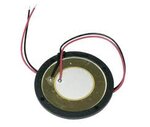Follow along with the video below to see how to install our site as a web app on your home screen.
Note: This feature may not be available in some browsers.
The very old CA3140 opamp is available anywhere in The West. Digikey have more than 3000 in stock in a DIP8 package and thousands more as surface-mount.It is an ordinary inexpensive opamp but it has Mosfets at its inputs.
Do you need its extremely high input impedance? Post the detailed schematic it will be used in.

Check if this one answer your need : NTE7144
If not, you can use search engine avaliable on Digikey: https://www.digikey.com/product-search/en?vendor=0&keywords=operational
+++
We can guess if a better designed predecessor had a capacitor in place of (or in series with) R13, forming voltage doubling rectifier.The stupid circuit has D3 that does absolutely NOTHING and it can be removed.
I also had the feeling that the extra diode might have been a poor attempt at making a voltage doubler.We can guess if a better designed predecessor had a capacitor in place of (or in series with) R13, forming voltage doubling rectifier.
I was going to say that it should specify using a piezo ultrasonic tweeter, then it won't need an input coupling cap.it needs an input coupling cap
I was going to work it out but since the transistors have an hFE from very low to very high I didn't because a few of them might work.and even then the biassing is hopelessly wrong throughout. With the resistor values given, both transistors on the left are saturated.
Better, but also bad. It looks like it came from the same website as the other circuit.
Do you know what kind of transducers you are going to use, You need to decide that before you choose a circuit.


Time to try another web site I think!
Both circuits might work under some circumstances but they are both bad designs. The receiver is actually capable of destroying itself. If the variable resistor is set to a low value it will kill T2. The transmitter will be very low power, between them I wouldn't expect a range of more than a few cm.
I get the impression their designer had no idea of how to calculate values and used variable resistors everywhere to tweak it until it worked then measured them and picked the nearest fixed value.
Brian.
You simply learn about electronics, they did not.if they don't have any proper designing ideas then how could i . . ?
You forgot to tell us what you want it to do. Simply turn something on and off? What is the "something"?please help me design a simple ultra sonic tx & rx ?
You simply learn about electronics, they did not.
You forgot to tell us what you want it to do. Simply turn something on and off? What is the "something"?
See if you can obtain a piezo ultrasonic receiver transducer and a matching piezo ultrasonic transmitter transducer. Their datasheets are needed.

You found a very cheap piezo transducer probably made for a beeper. It probably produces sounds from 3kHz to 6kHz at only one or two frequencies like a whistle but not ultrasonic sounds.for now i ve this one
You found a very cheap piezo transducer probably made for a beeper. It probably produces sounds from 3kHz to 6kHz at only one or two frequencies like a whistle but not ultrasonic sounds.
It can also be a microphone for one or two frequencies from 3kHz to 6kHz.
I guess you live in India. If so, you can buy them from RS online.ooo so how to get a proper one ? & where ?